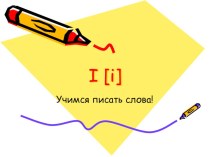- Главная
- Разное
- Бизнес и предпринимательство
- Образование
- Развлечения
- Государство
- Спорт
- Графика
- Культурология
- Еда и кулинария
- Лингвистика
- Религиоведение
- Черчение
- Физкультура
- ИЗО
- Психология
- Социология
- Английский язык
- Астрономия
- Алгебра
- Биология
- География
- Геометрия
- Детские презентации
- Информатика
- История
- Литература
- Маркетинг
- Математика
- Медицина
- Менеджмент
- Музыка
- МХК
- Немецкий язык
- ОБЖ
- Обществознание
- Окружающий мир
- Педагогика
- Русский язык
- Технология
- Физика
- Философия
- Химия
- Шаблоны, картинки для презентаций
- Экология
- Экономика
- Юриспруденция
Что такое findslide.org?
FindSlide.org - это сайт презентаций, докладов, шаблонов в формате PowerPoint.
Обратная связь
Email: Нажмите что бы посмотреть
Презентация на тему Презентація на тему Mobile phone
Содержание
- 2. HISTORYIn 1940s Motorola developed a backpacked two-way
- 3. Dr. Martin Cooper of Motorola is considered
- 4. The first mobile phones, referred to as
- 5. During the 1990s, great improvements were made
- 6. The Third Generation technology, or 3G, is
- 7. The Motorola StarTac was the first phone
- 8. Mobile manufactures & brandsThere are several mobile
- 9. Motorola
- 10. Nokia
- 11. Sony Ericsson
- 12. Samsung
- 13. Apple
- 14. How mobile phones workMobile phone can make
- 15. In Ghana, the mobile phone operators include:VodafoneTigoMTNAirtelGloExpressoYou
- 16. Uses Of Mobile PhoneMobile phones have already
- 17. Digital camera: Point-and-click! Phones capture pictures and
- 18. Audio recorder: Mobile phones can be used
- 19. Computer adjunct: For many, the cell phone
- 20. Documents viewer: It is increasingly possible to
- 21. Web client: Phones can also browse websites,
- 22. Multimedia messaging: Everything recorded can be shared with others by using MMS.
- 23. Скачать презентацию
- 24. Похожие презентации
HISTORYIn 1940s Motorola developed a backpacked two-way radio, the Walkie-Talkie and a large hand-held two-way radio for the US military. The same technology developed further and produced the mobile phone that we know today.
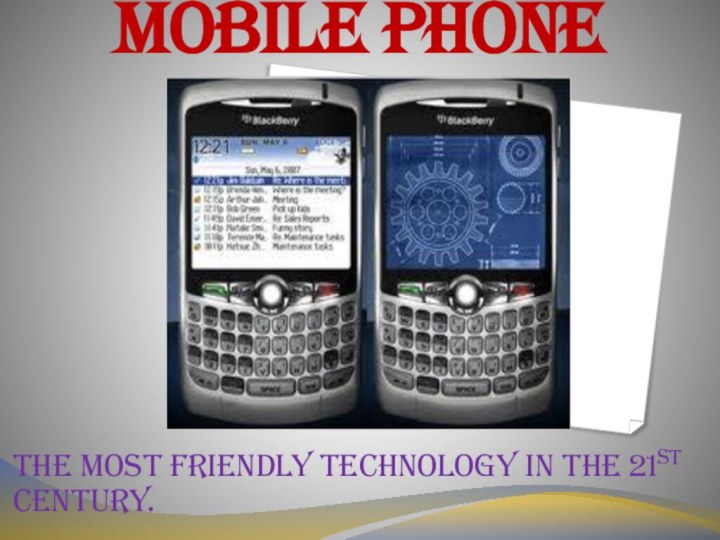
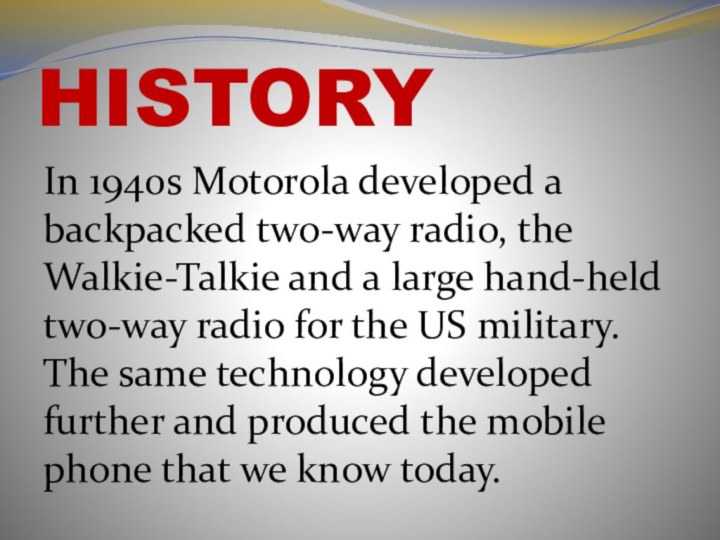

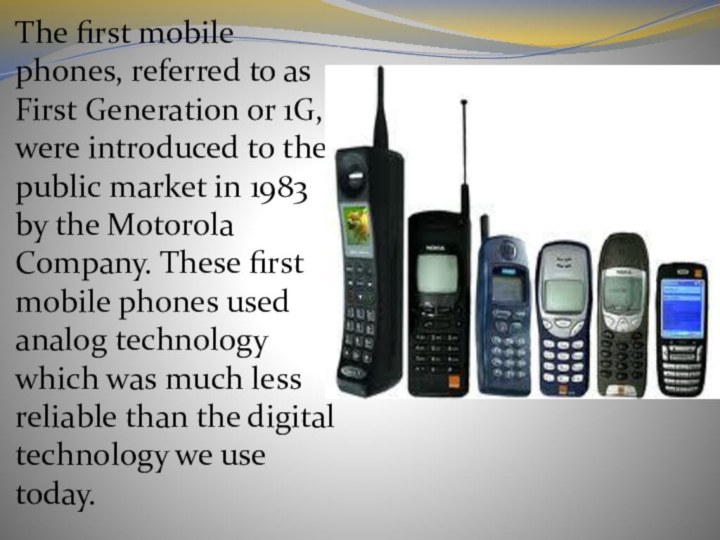
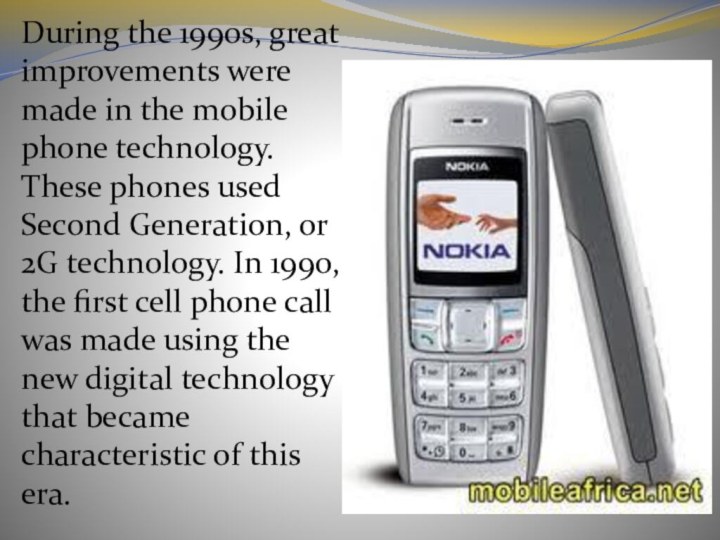
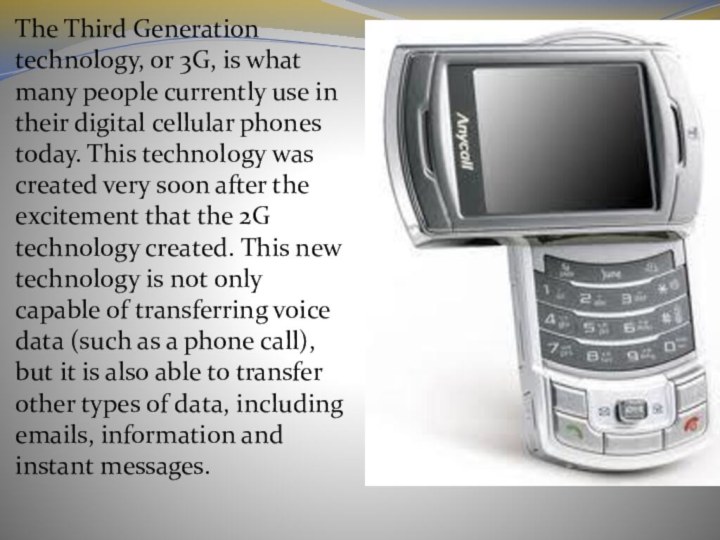

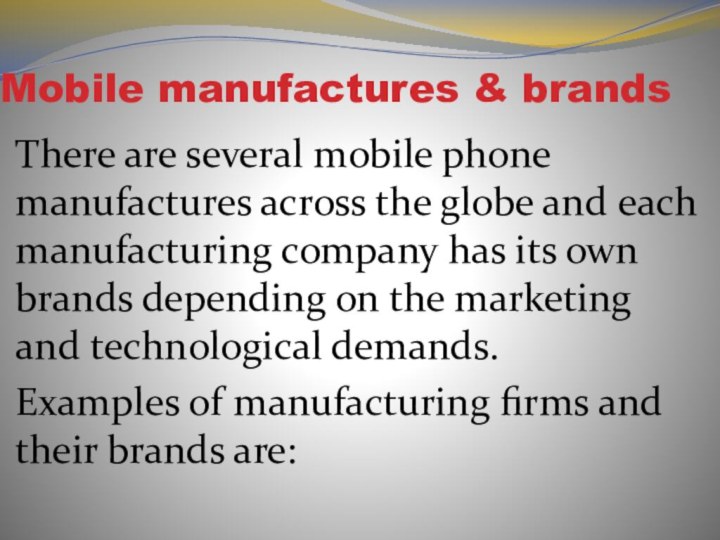
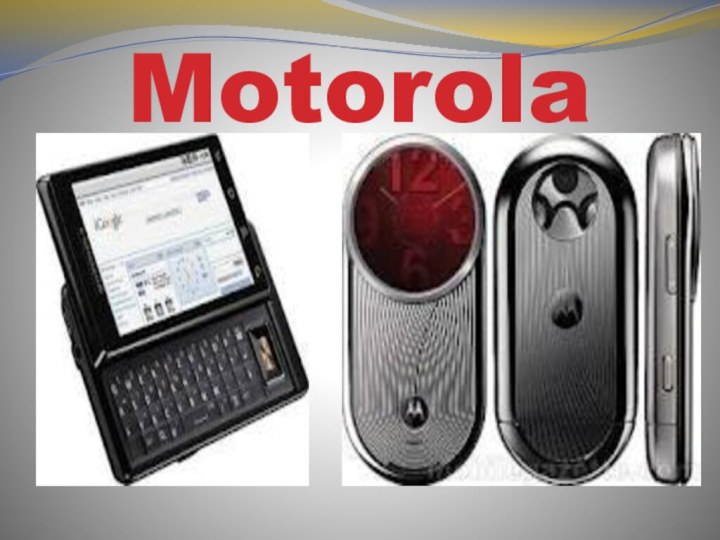
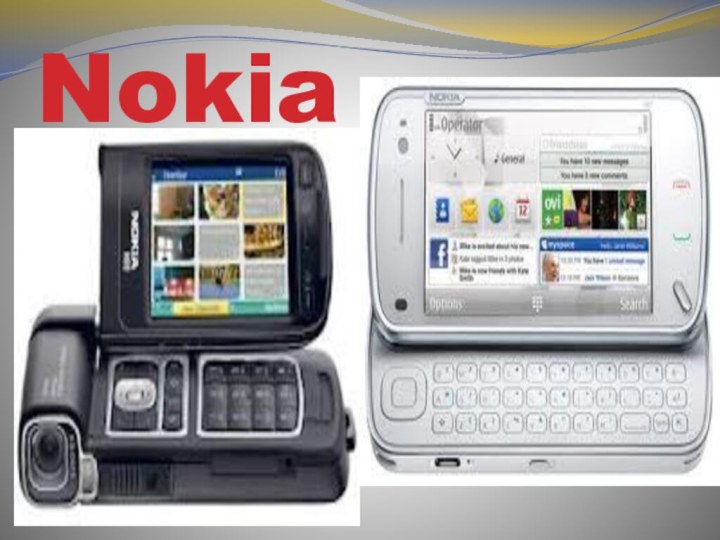
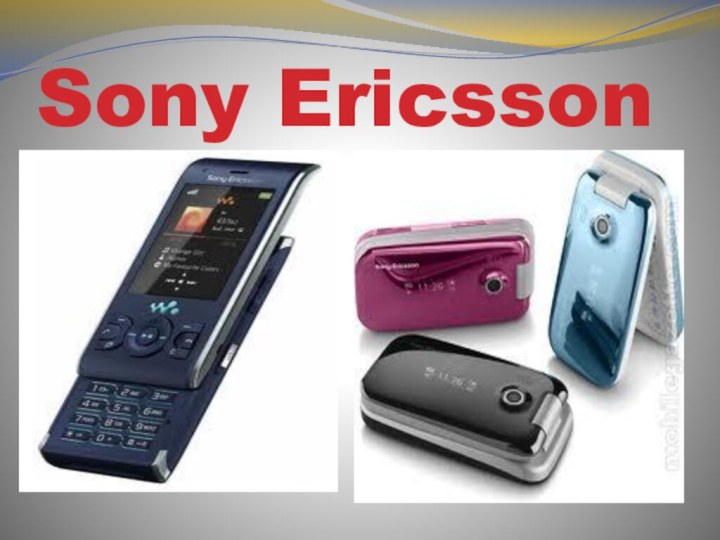
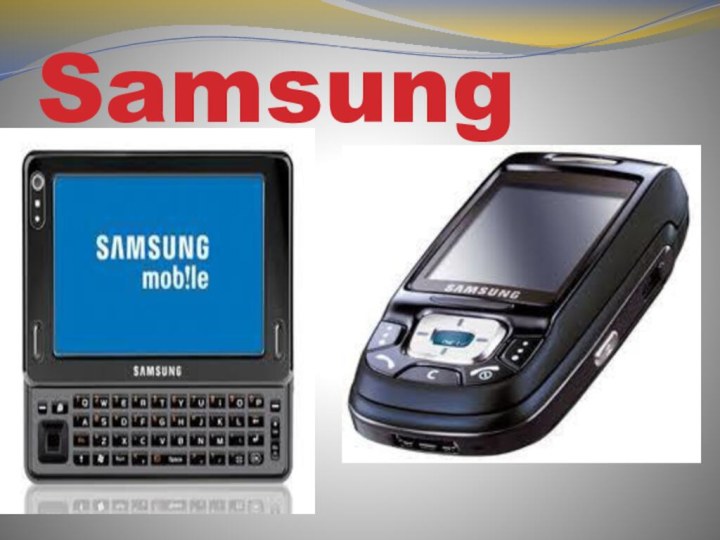
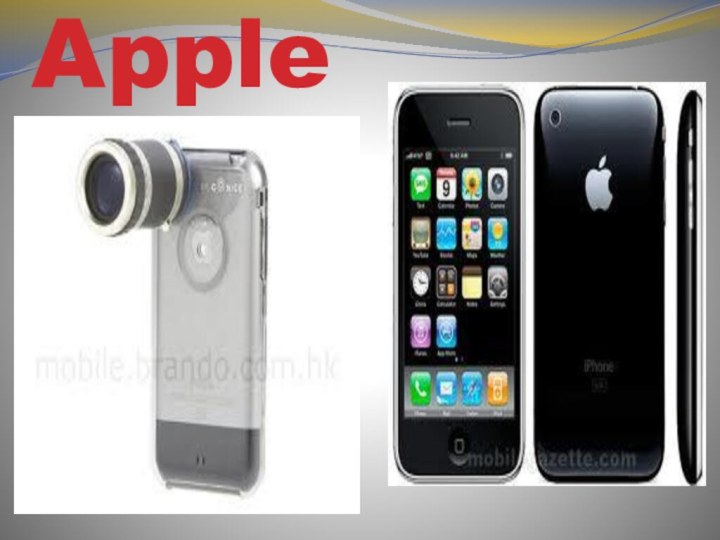
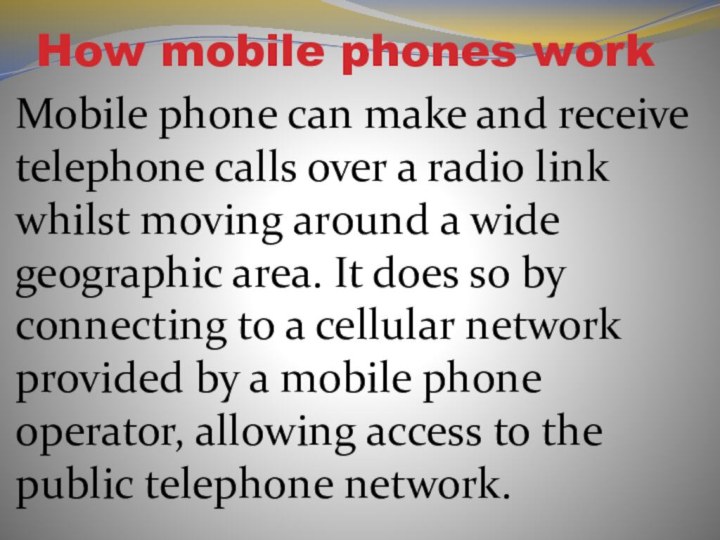
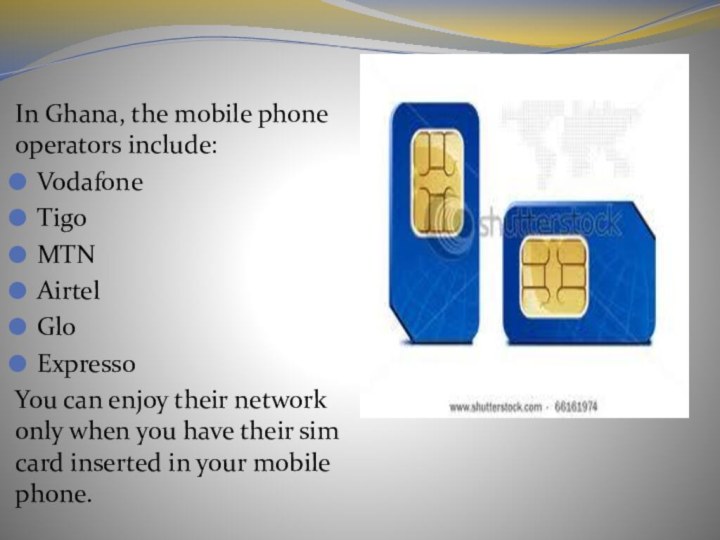
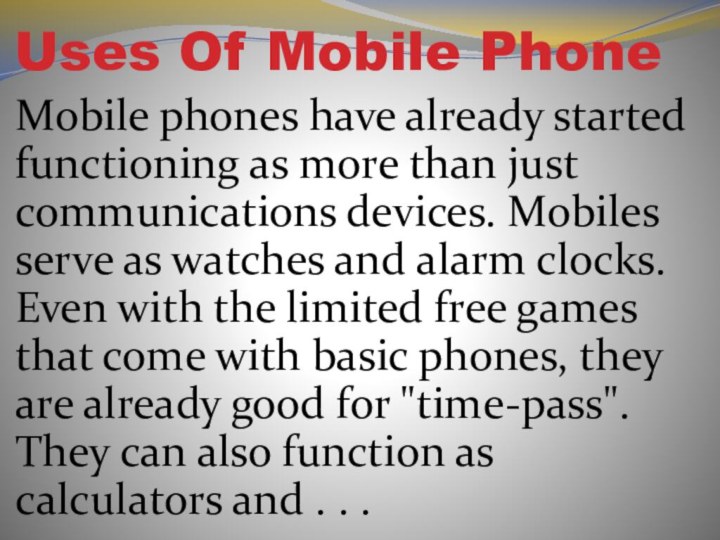
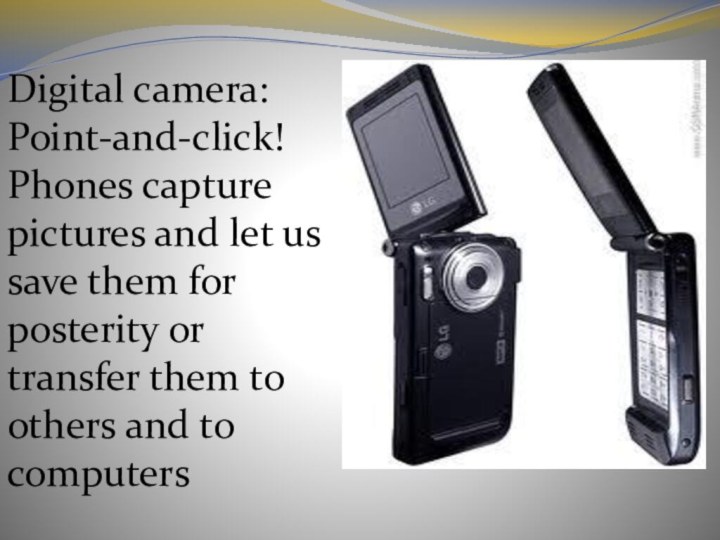
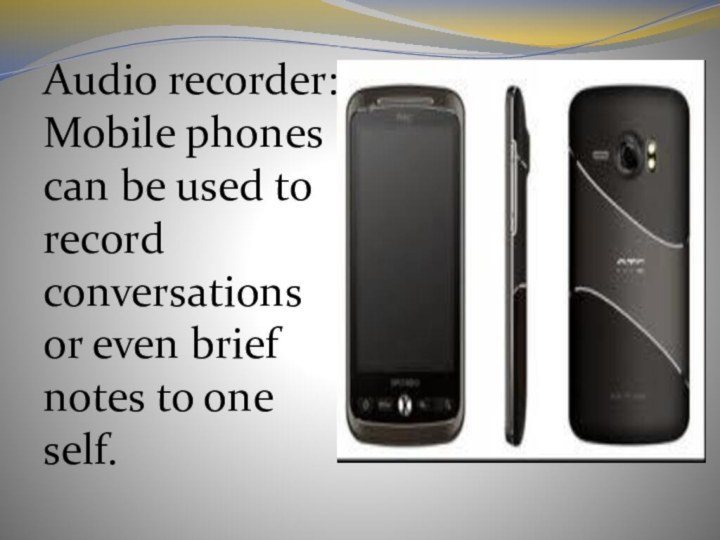
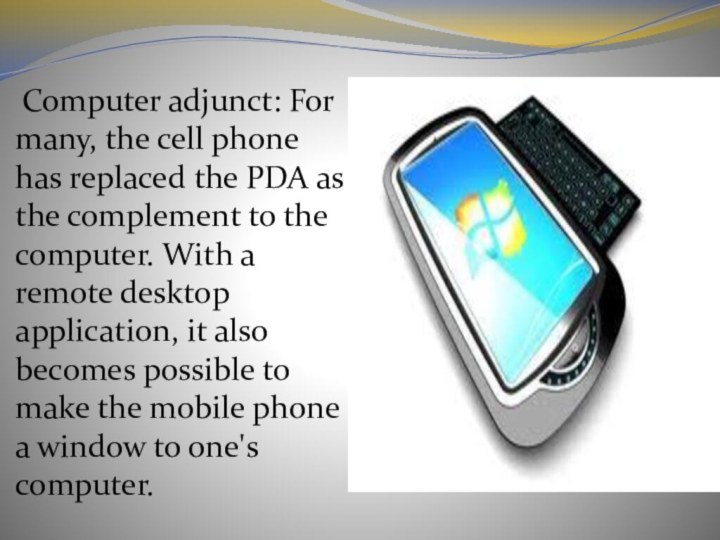
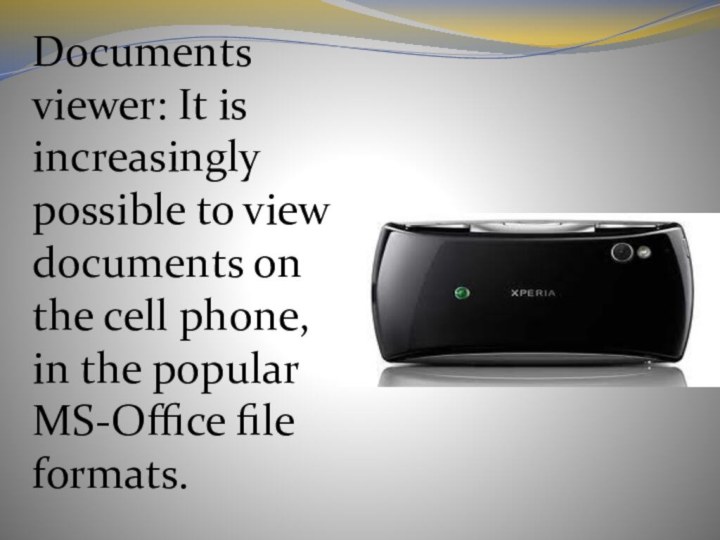
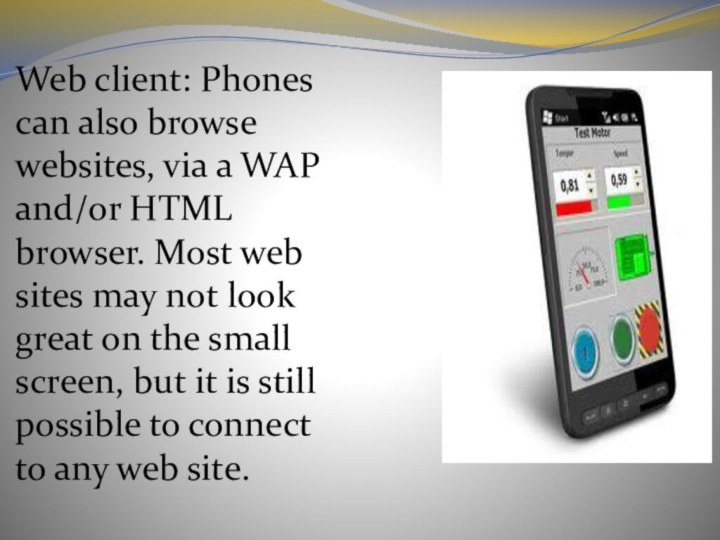
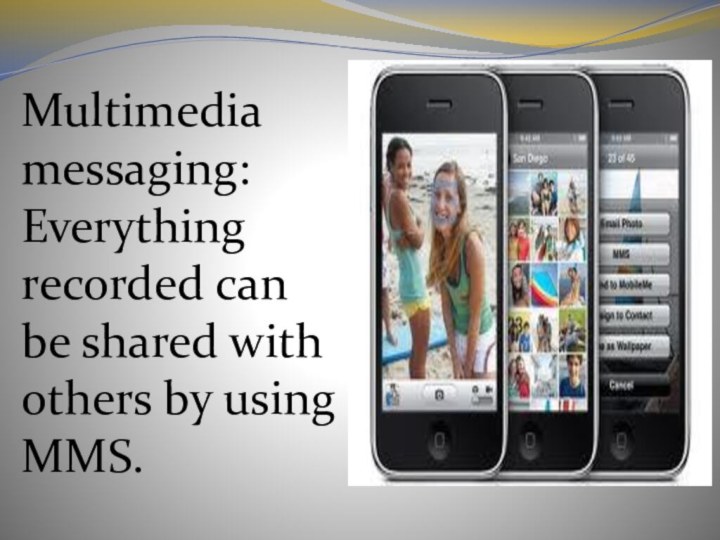

Слайд 3 Dr. Martin Cooper of Motorola is considered to
be the inventor of the first practical mobile phone.
On April 3, 1973, Martin placed a call to rival Joel Engel, head of research at AT&T's Bell Labs, while walking the streets of New York City talking on the first Motorola DynaTAC prototype.Слайд 4 The first mobile phones, referred to as First
Generation or 1G, were introduced to the public market
in 1983 by the Motorola Company. These first mobile phones used analog technology which was much less reliable than the digital technology we use today.Слайд 5 During the 1990s, great improvements were made in
the mobile phone technology. These phones used Second Generation,
or 2G technology. In 1990, the first cell phone call was made using the new digital technology that became characteristic of this era.Слайд 6 The Third Generation technology, or 3G, is what
many people currently use in their digital cellular phones
today. This technology was created very soon after the excitement that the 2G technology created. This new technology is not only capable of transferring voice data (such as a phone call), but it is also able to transfer other types of data, including emails, information and instant messages.Слайд 7 The Motorola StarTac was the first phone in
the world with Vibrating alert function. It was unveiled
in North America on January 3, 1996. StarTACs remained popular until the early 2000s.
Слайд 8
Mobile manufactures & brands
There are several mobile phone
manufactures across the globe and each manufacturing company has
its own brands depending on the marketing and technological demands.Examples of manufacturing firms and their brands are:
























